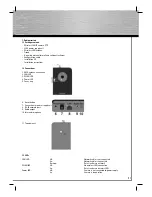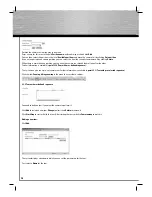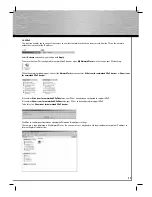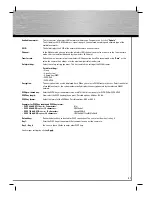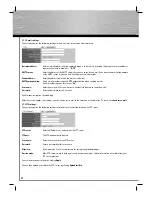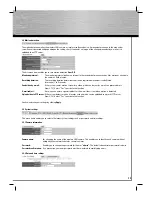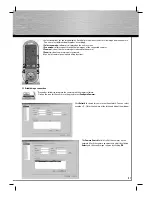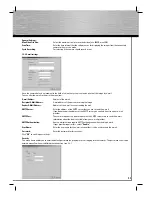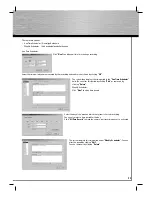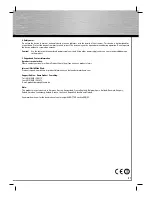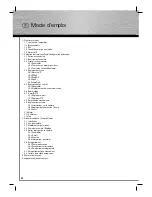
43
g
Operating Instruction
Dual mode:
Standard video format:
Choose between MPEG4 and MJPEG. The image quality with MPEG4 is better than with MJPEG.
However, MPEG4 also create larger fi les.
Standard video mode:
Choose between “Normal” and “Mega-pixel mode”. In “Mega-pixel mode”, it is possible to have a higher
resolution of the image.
Frequency:
You can alter the frequency depending on the lighting in the area under surveillance. Select 50 Hz for
interior monitoring by daylight 60 Hz – for interiors with predominantly electrical lighting.
MPEG4:
Video resolution:
Choose between XGA (1024x768), VGA (640x480) or QVGA (320x240).
Video quality:
Choose either CBR (constant bitrate) if you would like to set a constant bitrate or VBR (variable bitrate) in
order to dynamically control the transmission rate of the image from the camera.
Refresh rate:
Set how often (in seconds) the camera image is to be refreshed.
MJPEG:
Video resolution:
Choose between SXGA (1280x1024), VGA (640x480) or QVGA (320x240).
Video quality:
Choose the image quality from one of fi ve levels, from “lowest” to “highest”.
Refresh rate:
Set how often (in seconds) the camera image is to be refreshed.
Audio:
Connecting a loudspeaker to the camera makes it possible to output speech on the camera through the PC.
The camera also includes an integrated microphone. This allows one to also acoustically monitor the area
under
surveillance.
Audio function:
Activate or deactivate the audio function. If you wish to transfer only the live image, then you have the
option here of activating the audio playback.
Microphone volume control:
Here you can regulate the input volume of the camera microphone.
Line-out volume:
Here, you can regulate the volume of the line-out output on the camera.
2.7 E-mail and FTP
After detecting a movement in the fi eld of vision, the network camera can send images via e-mail or upload them to an FTP server.



